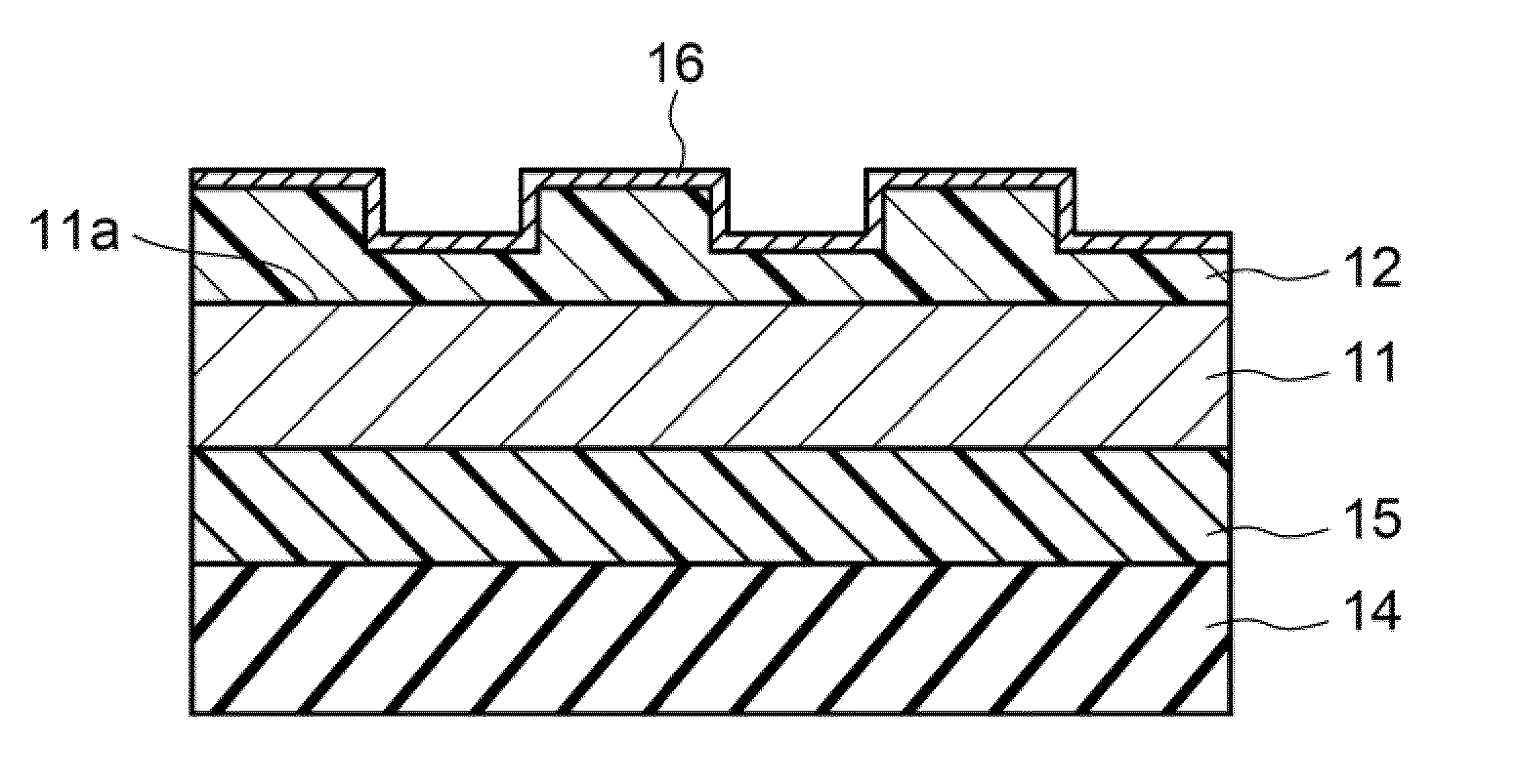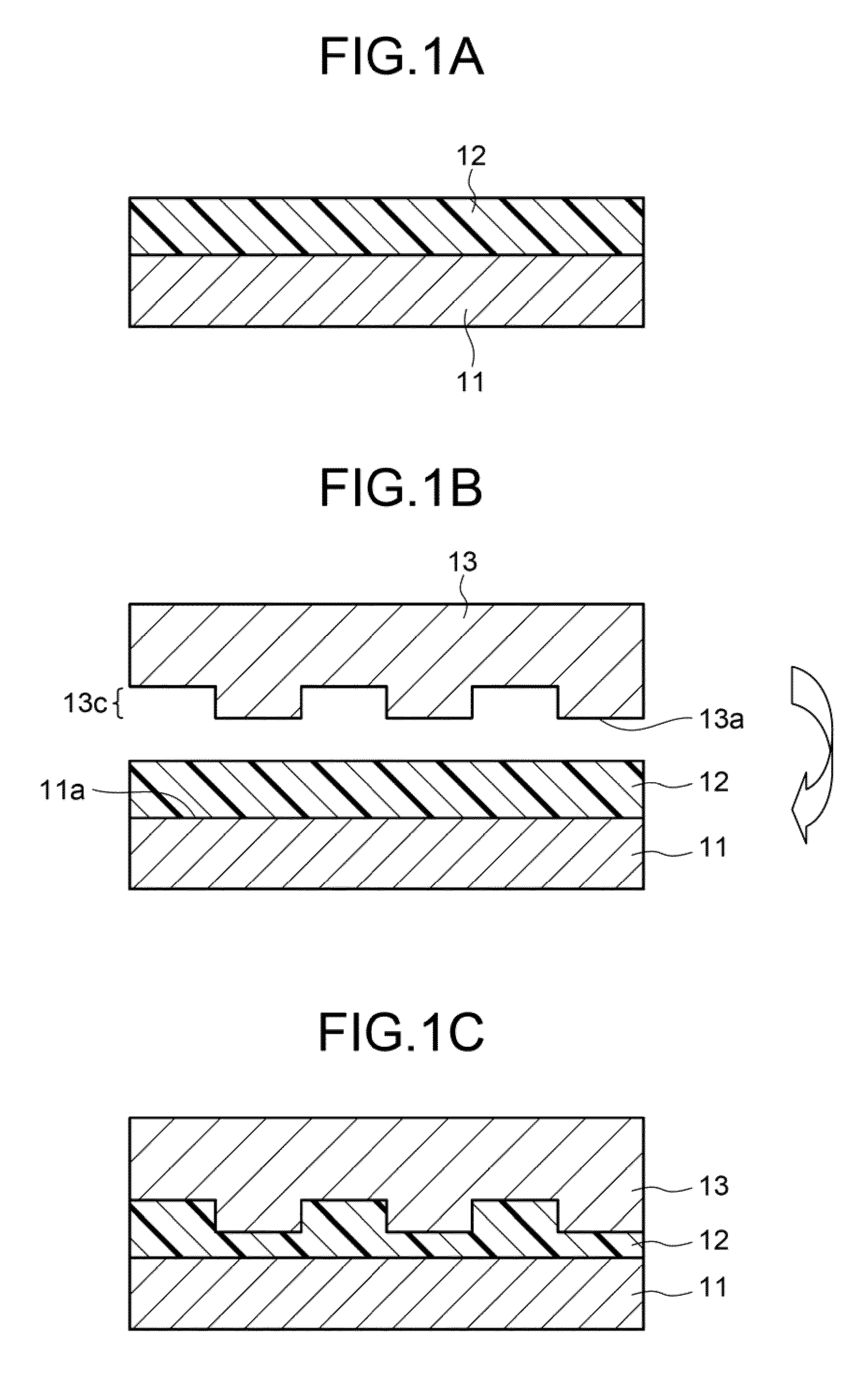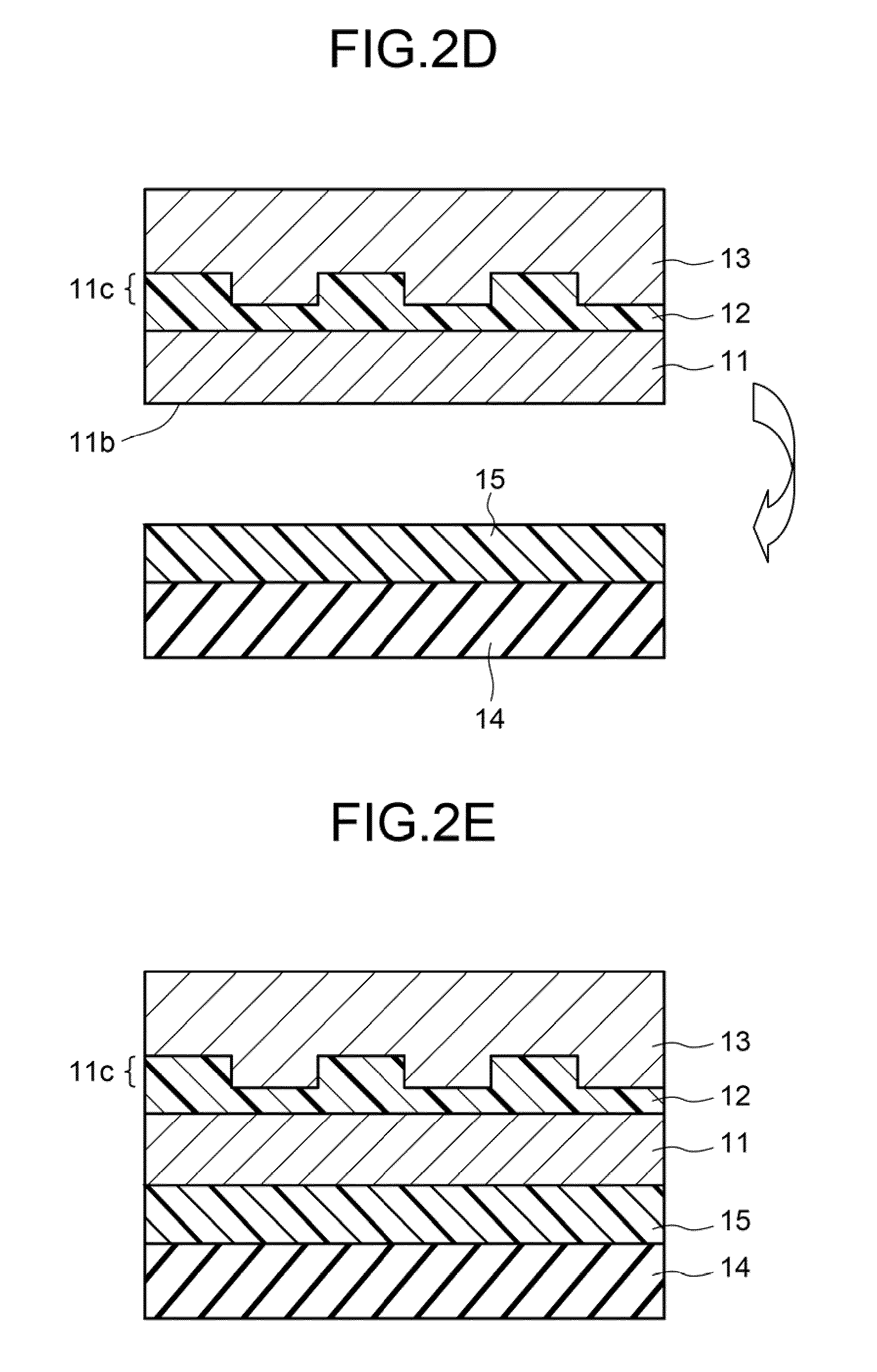Fine-pattern structural body manufacturing method and fine-pattern structural body
- Summary
- Abstract
- Description
- Claims
- Application Information
AI Technical Summary
Benefits of technology
Problems solved by technology
Method used
Image
Examples
Embodiment Construction
[0056]In each exemplary embodiment described hereinafter, a transparent stamper on which an optical disk pre-format or lands / grooves are formed is used as a mold. For the transparent stamper, a stamper obtained by forming a pattern on quartz glass or a stamper obtained by forming a pattern on a PC (polycarbonate) substrate is used as appropriate. For a film substrate, a flexible PC film substrate of about 75 μm-120 μm in thickness, a PET (polyethylene terephthalate) film substrate, or an amorphous polyolefin film substrate is used as appropriate. Further, for the rigid substrate having rigidity, a PC substrate of 1.2 mm in thickness with a dummy groove manufactured in a large amount by injection molding is used. Furthermore, for each ultraviolet curing resin used in each exemplary embodiment, an ultraviolet curing resin from which bubbles are eliminated in vacuum before being applied is used. The bubbles are eliminated in vacuum in order to prevent micro bubbles that are rarely mixe...
PUM
| Property | Measurement | Unit |
|---|---|---|
| Thickness | aaaaa | aaaaa |
| Pressure | aaaaa | aaaaa |
| Pressure | aaaaa | aaaaa |
Abstract
Description
Claims
Application Information
 Login to View More
Login to View More - R&D
- Intellectual Property
- Life Sciences
- Materials
- Tech Scout
- Unparalleled Data Quality
- Higher Quality Content
- 60% Fewer Hallucinations
Browse by: Latest US Patents, China's latest patents, Technical Efficacy Thesaurus, Application Domain, Technology Topic, Popular Technical Reports.
© 2025 PatSnap. All rights reserved.Legal|Privacy policy|Modern Slavery Act Transparency Statement|Sitemap|About US| Contact US: help@patsnap.com



